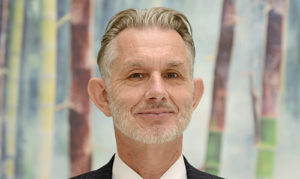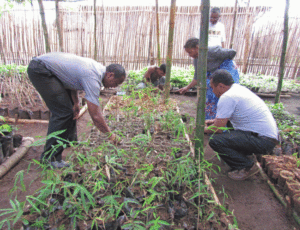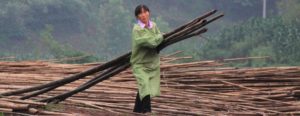
Next year, with the start of Phase 2 of the CGIAR Research Program on Forests, Trees and Agroforestry (FTA), two new managing partners will come on board. One of them is the International Network for Bamboo and Rattan (INBAR), an international non-governmental organization dedicated to helping improve the wellbeing of users and producers of bamboo and rattan within the context of a sustainable resource base. We asked INBAR’s Director General Hans Friederich what joining FTA means for his organization. See more partnerships stories here.
Why did INBAR join FTA?
Bamboo and Rattan are Non-Timber Forest Products that play a critical role in forest ecosystems. They are also used widely in agroforestry systems throughout the tropics and sub-tropics.
Therefore, there are strong synergies between our work and the goals of the FTA program. We currently serve 42 member states and many of these are target countries for FTA research.
How was the partnership arranged?
In preparation of the FTA Phase II, INBAR met with FTA Director Robert Nasi in Beijing in the autumn of 2015 to share our areas of expertise and learn more about the plans for the second phase of the program.
Based on this, INBAR was invited to present its work at a planning meeting for FTA centers and partners in Paris during UNFCCC COP 21. Based on these discussions, INBAR provided inputs to the program as a partner institution that does not belong to the CGIAR.
What was the relationship between INBAR and FTA like until now?
During phase I of FTA, INBAR worked with partners such as the Center for International Forestry Research (CIFOR) and the World Agroforestry Centre (ICRAF) to provide input to research on bioenergy and sustainable charcoal.
INBAR and and another FTA partner, CATIE, are both members of the Association of International Research Centres for Agriculture (AIRCA) and have a long history of working together to promote sustainable landscape management.

What will be your contributions to the next phase as far as you can foresee them now?
Over almost 20 years, INBAR has developed a set of proven models for delivering livelihood development impact at the smallholder level. Our work has already helped to improve the livelihoods of over 300,000 people in our member states.
In addition, we have several good case studies of how bamboo can contribute to landscape restoration, particularly from India and China, where bamboo has been used to restore close to 4 million hectares.
We believe we will be able to add value to FTA research by bringing this development expertise to the partnership.
We have existing programs in Ghana, Ethiopia, Kenya, Uganda, Tanzania and Madagascar, where we are already working on transfer of models on livelihood development, environmental protection and landscape restoration from Asia to Africa.

We also look forward to creating linkages with FTA to our work in China, where we are headquartered, as well as Latin America and the Caribbean and South Asia.
What are your expectations for the collaboration?
We are excited by the possibility of linking some of the over 2000 FTA scientists to our work in INBAR member states. This will strengthen our development-oriented approach by enabling us to apply cutting-edge scientific research and practices from FTA to our action research and programs.
We hope this will give the governments of our member countries the evidence base needed to develop well-informed policies that maximize the contribution bamboos and rattans can make to meeting national and international commitments to the Sustainable Development Goals.
Long-term relationships and mutual trust—partnerships and research on climate change
The best science is nothing without local voices: Partnerships and landscapes
Influence flows both ways: Partnerships are key to research on Livelihood systems











